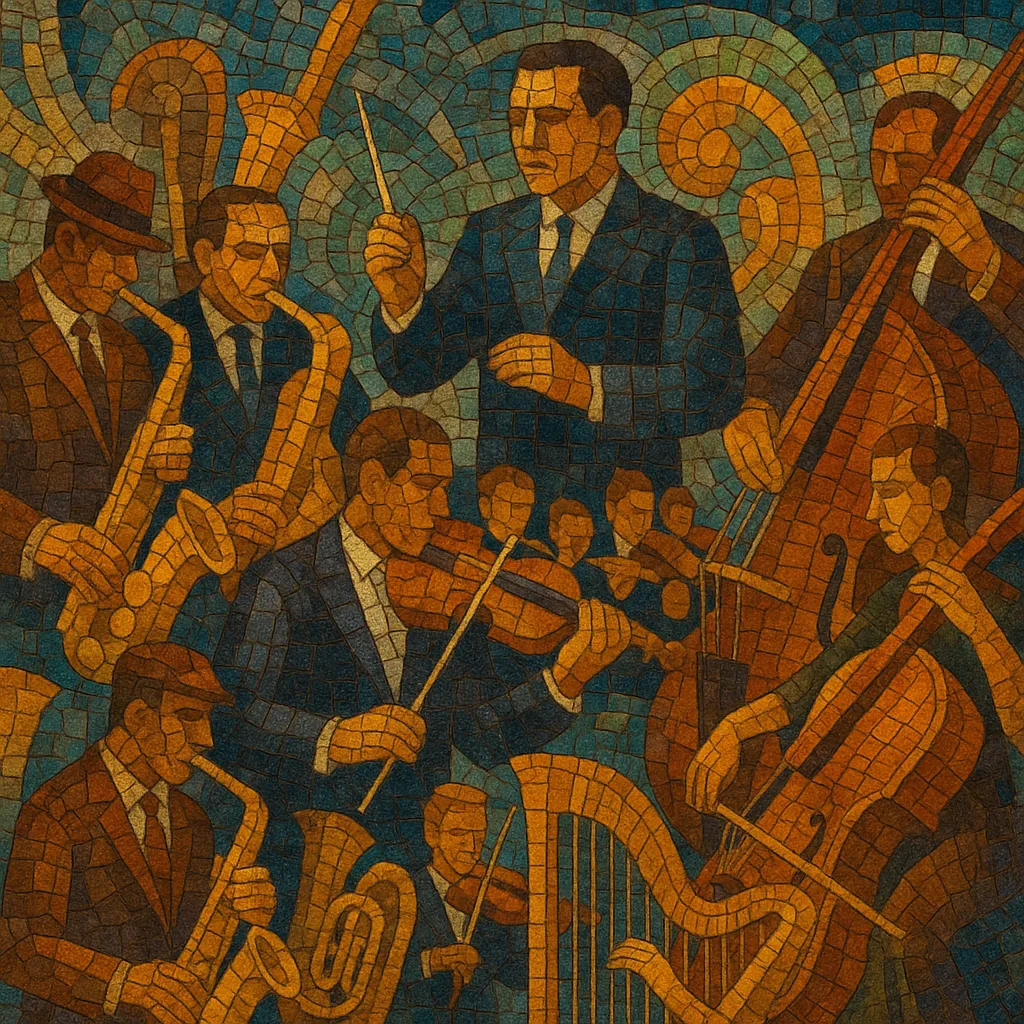
Orchestral jazz blends the improvisational spirit, swing feel, and extended harmony of jazz with the instrumentation, color, and large-scale forms of the orchestra.
Typically built on a big-band core of saxophones, trumpets, trombones, and rhythm section, it augments the palette with strings, French horns, tuba, harp, and expanded percussion to achieve symphonic weight and timbral variety. Arrangers use techniques from classical orchestration—counterpoint, sectional scoring, motivic development—while preserving room for jazz solos and groove.
The style took shape in the 1920s as “symphonic jazz” in the United States (e.g., Paul Whiteman’s commissions of George Gershwin), matured through Duke Ellington’s extended suites, and evolved post‑war via Stan Kenton, Claude Thornhill, and Gil Evans. Today, contemporary composers such as Maria Schneider continue the lineage with modern harmony, subtle textures, and long-form works.

